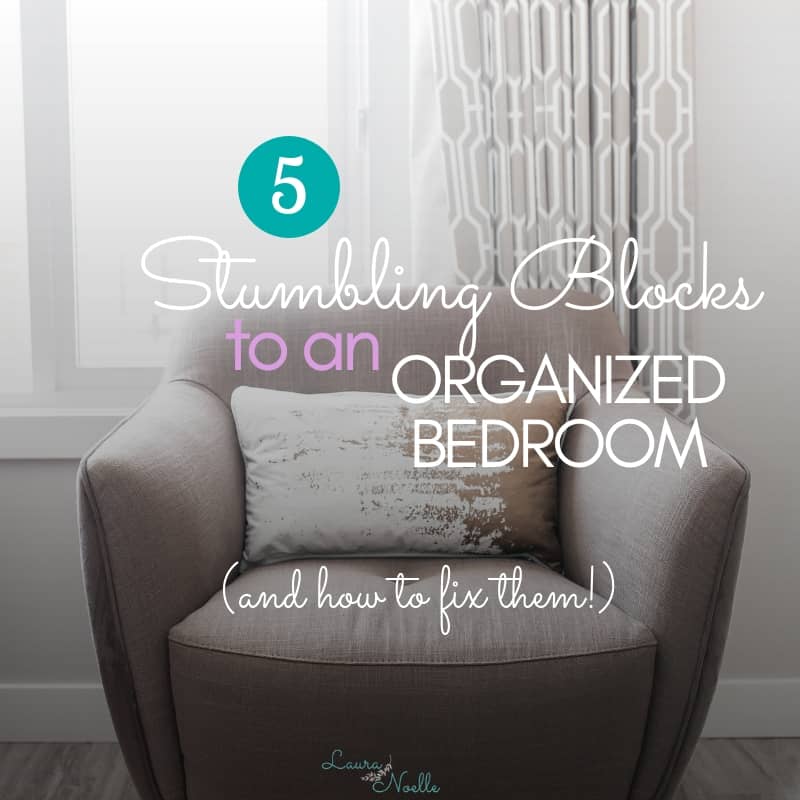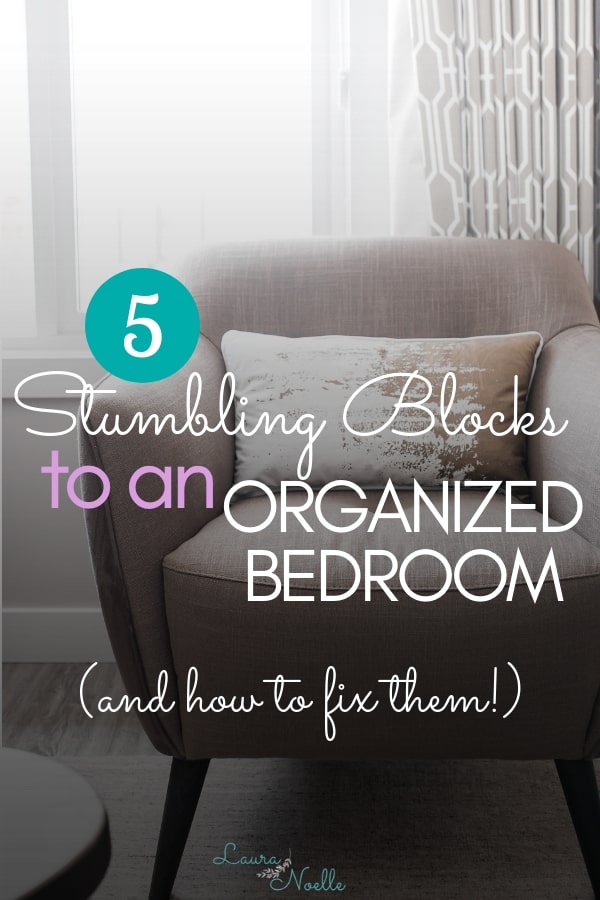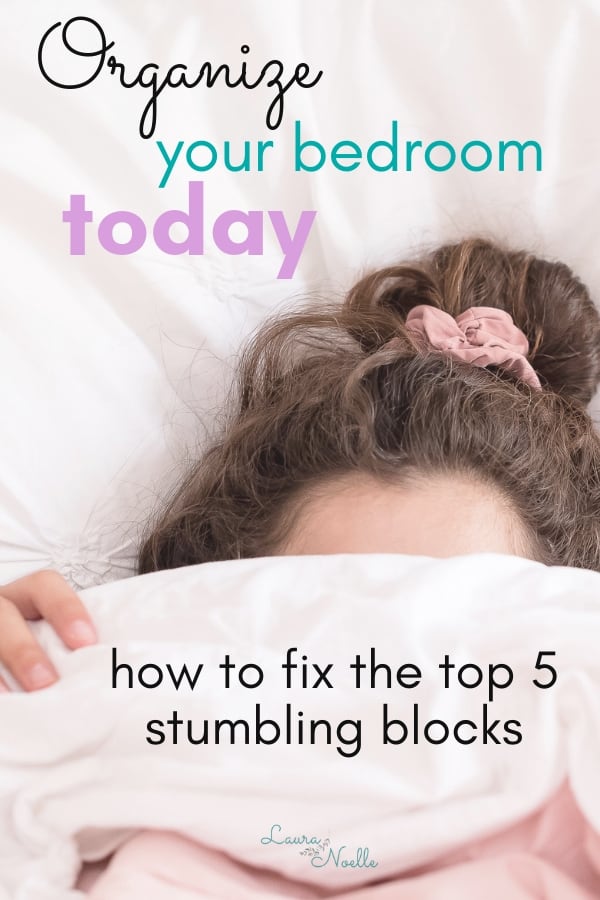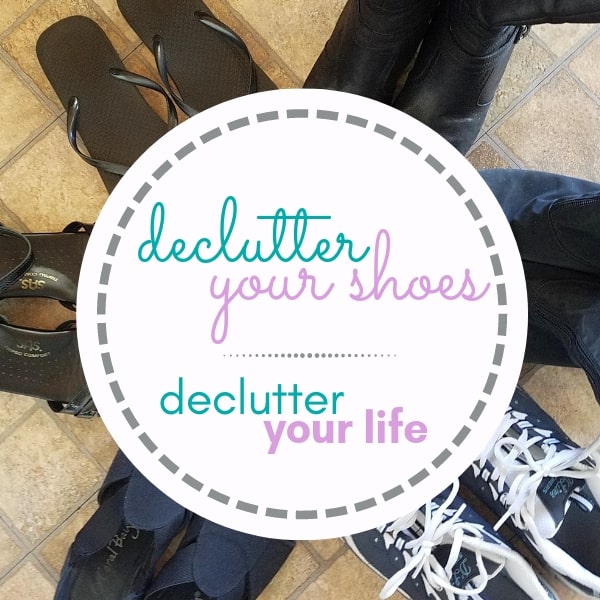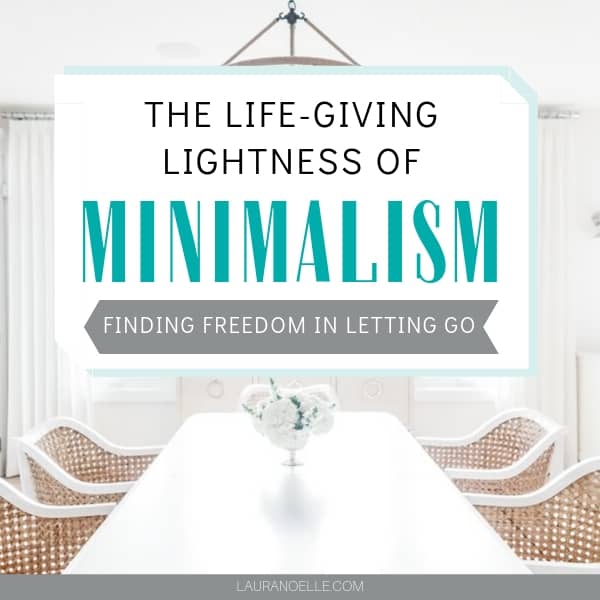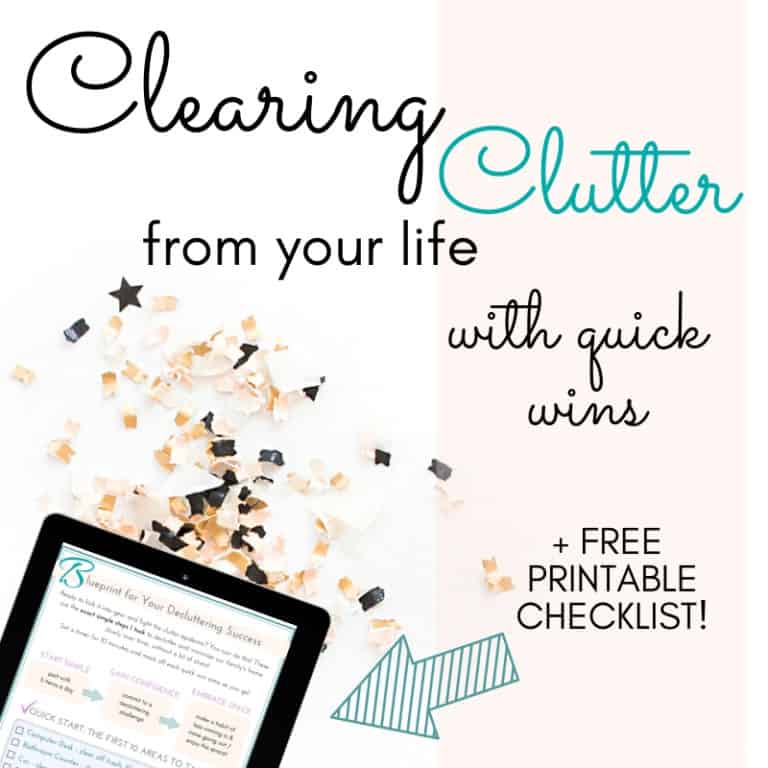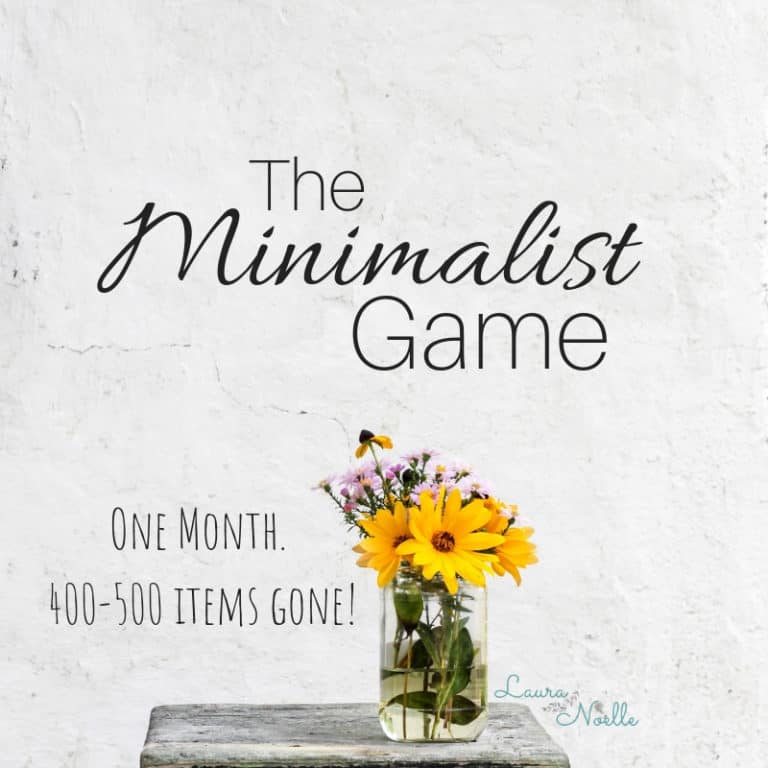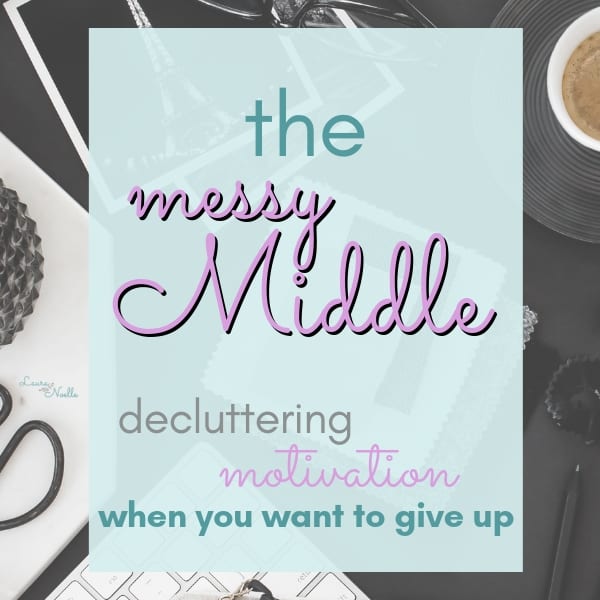5 Stumbling Blocks to an Organized Bedroom (and how to fix them!)
This post may contain affiliate links, which means I may receive compensation if you make a purchase using one of these links.
Bedrooms are among the most difficult rooms in the house to keep organized and clean, according to a recent poll of my YouTube audience. In my years as a Professional Organizer, I’ve seen many bedrooms with similar hangups. But there’s hope–here are 5 stumbling blocks to an organized bedroom, and how to fix them!
1. Chair in the Bedroom
Some chairs have useful purposes, like a rocking chair if you have an infant, or a window seat if you like to have creative time while looking out a window, but most chairs in bedrooms only have one purpose: stuff collection.
Let’s be real… how often do you sit in that chair? If it’s less than three times a week, I’d seriously encourage you to move it to a better place in the house where it would get used, or move it out altogether.
Most chairs end up with piles: laundry (clean or dirty), toys, to-dos, things that don’t belong, things that are going out, or mounds of blankets or pillows. If it’s not serving the purpose of actually being sat in–it’s time to let go of the clutter-catching chair.
Quick Fix: Ask yourself how often someone sits in the chair and consider if it’s serving a needed purpose, or causing more stress by collecting stuff. If it’s the latter, let it go.
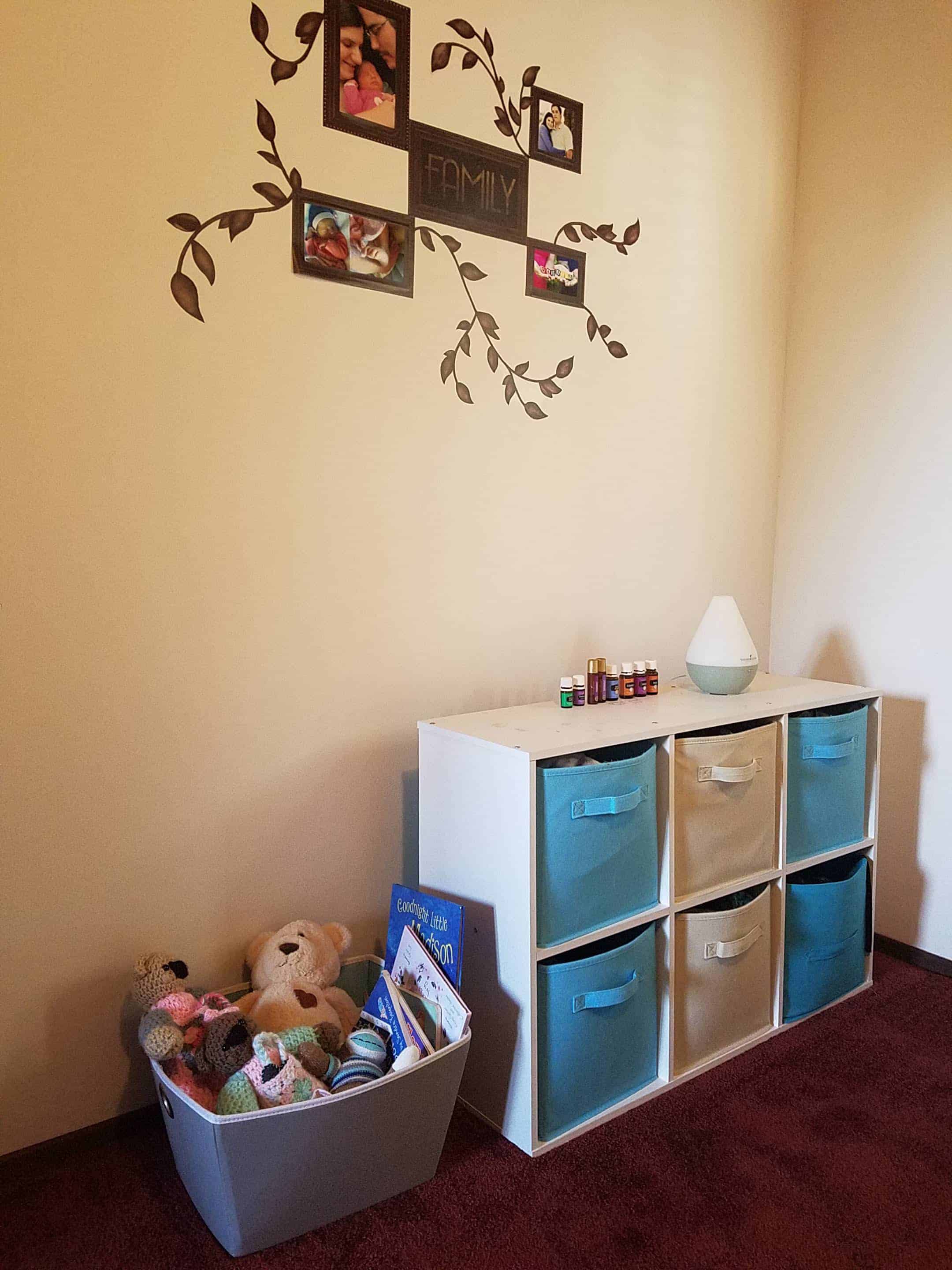
2. Dressers, Bookshelves, Cubes & Wardrobes
These pieces of furniture are not inherently bad, but if they have a flat surface on top, I can almost guarantee that clutter is attracted to it.
Mirrors, combs, hair accessories, makeup, water glasses, eyeglasses, electronics, cords, jewelry boxes, knickknacks, picture frames, keepsakes, paper, books, journals, medicine.
The list could go on! Again, none of those things are bad either, but if you try to keep ALL of that on your dresser, you won’t be able to find anything!
A general rule for surfaces is to keep them 80% clean and clear when you’re not actively using them. That includes vanities, kitchen counters, and shelves! The more visual clutter on your surfaces, the more stress and anxiety you feel.
Quick Fix: Ask yourself if the items on your surfaces are being used in these places, or just stored there because you’re not sure where else to put them. Consider letting go of excess items that don’t get used much and move non-essentials to drawers or containers, leaving surfaces 80% clear.
3. Nightstands
While you could consider nightstands to be bedroom furniture addressed above, I want to pull it out for a special reason. Most people will find that a dresser, cube or shelf is a non-negotiable for having an organized bedroom. After all, you need a place to store your clothes!
But nightstands are a whole different beast.
Your nightstand can be organized and helpful for simplifying your life. It may also be hindering your sleep by storing mounds of clutter, work, and stress right by your head each night.
A simple nightstand may be small and hold things like a book you’re reading, a journal and pen, eyeglasses, or nighttime essential oils.
A stressful cluttered nightstand may hold a stack of ten books, none of which you have time to read, six notebooks and fourteen pens in various colors, a plate from your evening snack, a glass of water, your old iPhone, three cords you don’t even know what they belong to and a stack of papers you brought home from work that you think you should review before bed.
If your nightstand even remotely reflects that second example, you have two options. Declutter the stuff, or declutter the nightstand.
If you’re determined to keep it clean and minimal, you might be able to keep the nightstand, but if you doubt that you’ll be able to do that, get rid of the temptation.
Quick Fix: Ask yourself what gets stored on and in your nightstand and why it’s there. Consider decluttering all items that are not needed in your bedtime or morning routines. If you decide you don’t need the nightstand anymore, or if it’s too strong a temptation to store clutter, let go of the furniture.
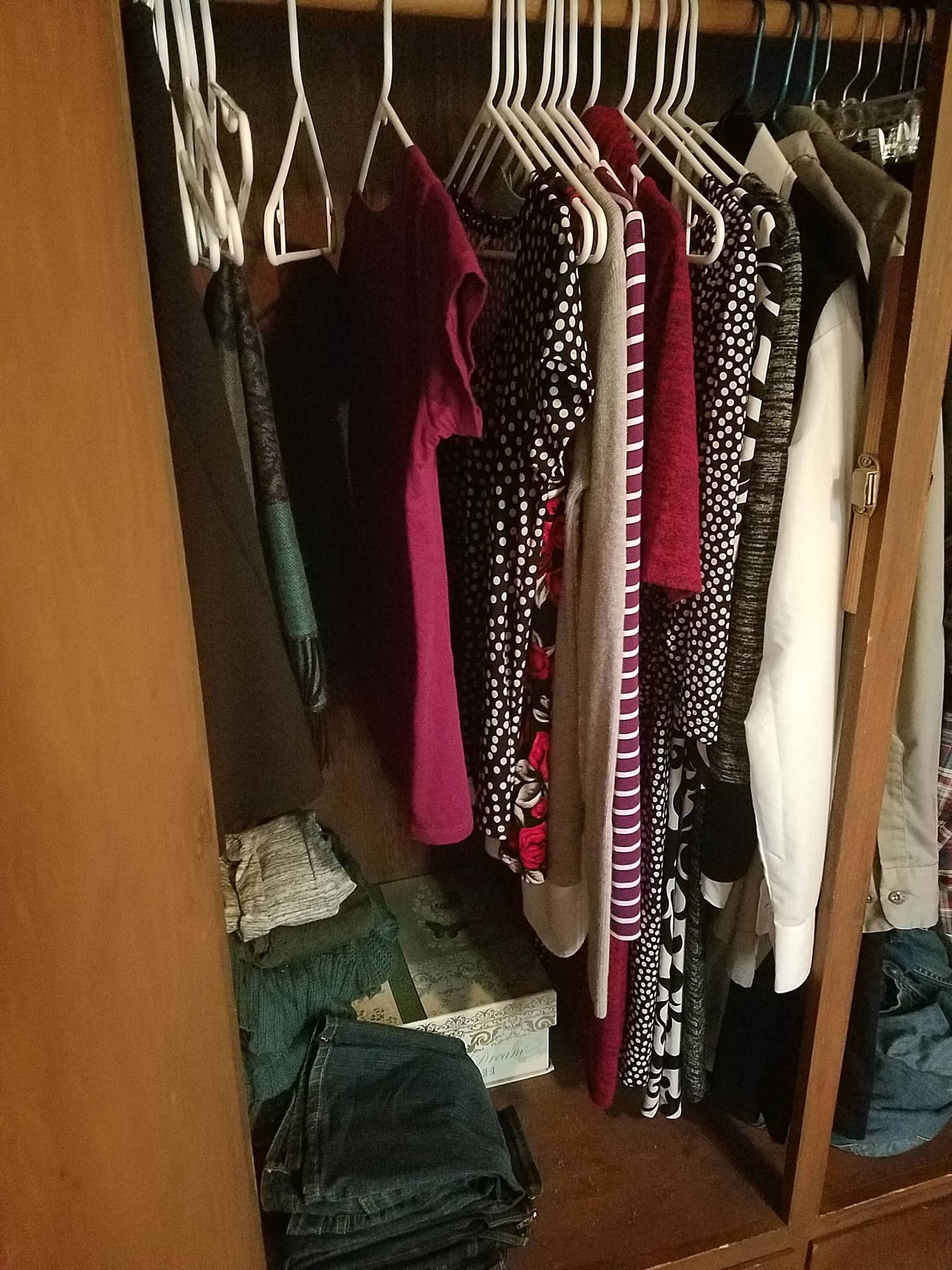
4. Clothing & Closets
When it comes to clothes, I’ve seen it all (I’ve also done it all…). Piles and piles of laundry on the floor, the bed, chairs, dressers. Clean laundry, dirty laundry, clothes with tags, clothes that don’t fit, and clothes for every member of the family.
Clothing is wonderful. It’s also a tremendous stressor.
Why is it stressful? You have too much of it.
I know, tough words to hear. I used to love shopping and bringing home a new outfit. Shopping for baby clothes was even worse–they were so tiny and irresistible! The power of that adrenaline rush when you make a purchase is strong.
If you truly evaluate how often you wear the clothes in your closets and drawers, almost everyone will find that they wear about 20% of their clothes, 80% of the time. What does that leave? 80% of your stress and clutter is completely unnecessary.
When I was newly married, my poor husband barely had a few inches in the closet because my clothes took up the entire thing. It wasn’t pretty, and I felt really bad. My journey to minimizing my wardrobe began way back then, and it took testing out Project 333 to move me to a seasonal capsule wardrobe that I love.
Your personality will guide you to a method that works for you when paring down the clothing. You may want to put a physical number on it like 33 or 50 pieces of clothing. Or you may want to sort and declutter by type or the amount of storage space you have. If the word capsule freaks you out, call it a minimal or simple wardrobe.
You don’t have to follow rules, but you do need fewer clothes. There should always be plenty of room in your closet and drawers so excess clothing doesn’t have to be stored on the floor or in your child’s closet. If things are crammed in–it’s time to declutter.
Quick Fix: Ask yourself how you feel about your clothing and closet situation. Are things jammed in there? Do you even know what all you have? Consider taking out ALL your clothes, placing them in one pile, and going through them one by one, making sure they fit, are in season, and are worn.
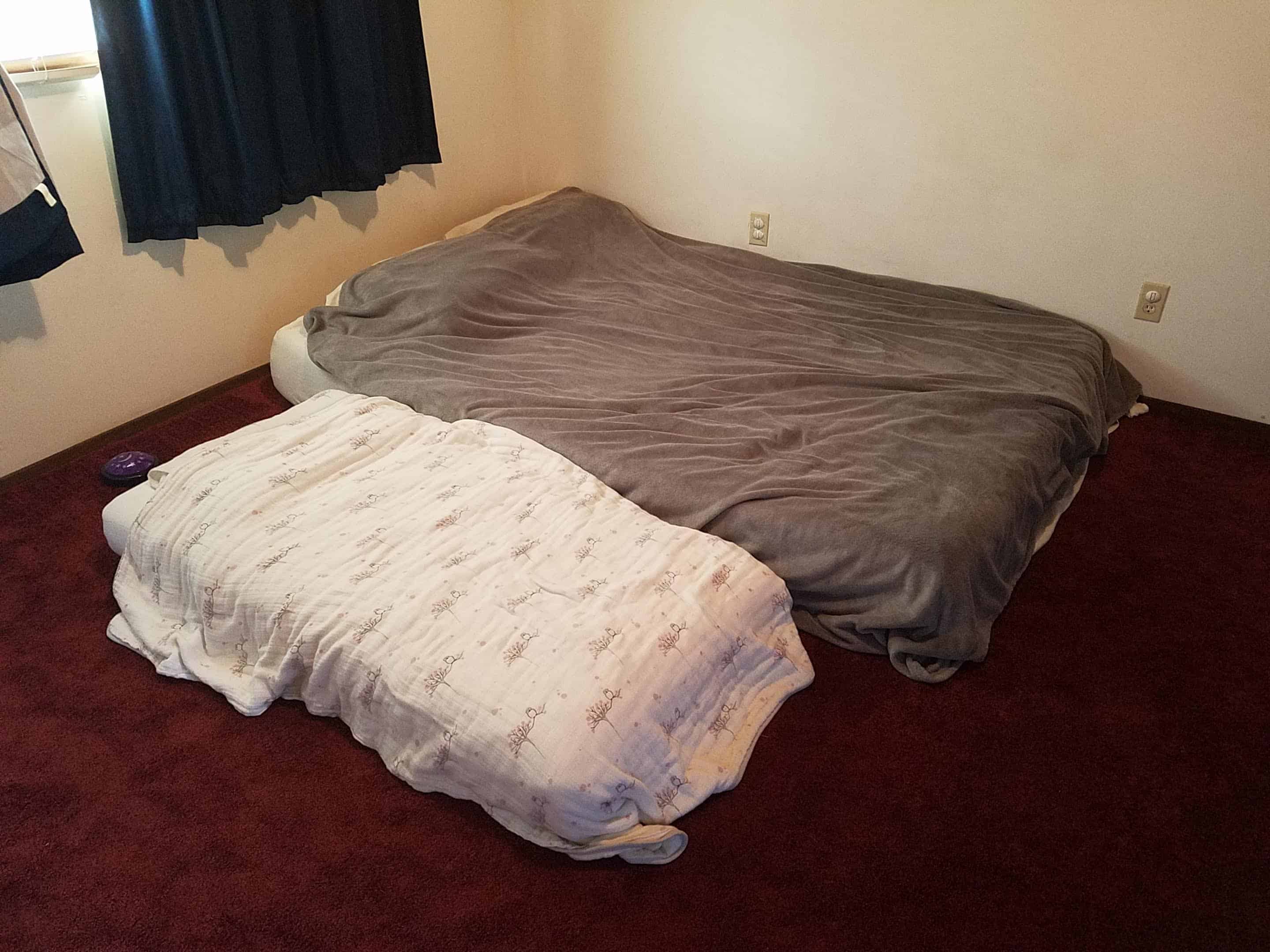
5. Boundaries for Things that Don’t Belong
I discuss this more in 3 Simple Steps to Creating a Minimalist Bedroom & Maintaining it!. When there is an issue with clutter in the bedroom, it often means that items of all types come into the room, but never go out.
If you’re in the habit of bringing your purse, keys, purchases, kids toys, piles of books, office supplies and work materials into your bedroom, you must break that habit.
The bedroom is for rest. Sleeping, relaxing, unwinding. When work, toys, electronics, and clutter invade on the restful space it immediately creates a chaotic atmosphere where you may find it difficult to get restorative sleep.
Noise–whether actual noise or visual clutter–act in similar ways: they fluster the brain and keep you always thinking about the things you need to do or that didn’t get done.
It’s extremely important to clarify to yourself and your family exactly what is allowed in the bedroom and what’s not. In our home, I made one small basket for my daughter’s stuffed animals, blankets and bedtime books. That’s all that stays in the room. If she brings other toys in, that’s fine, but they go out again when she’s done playing.
When my husband brings cords, electronics or dishes into the room, that’s fine, but they go out again when he’s done.
If I bring books, laundry, or anything else in, it gets put away where it belongs or leaves when I’m done.
Other types of items don’t even make their way into the bedroom anymore because the boundaries have been set.
Setting boundaries create freedom and clarity. Everyone is held to the same expectation and if you take just a few minutes a day to enforce it, your room will absolutely stay more organized!
Quick Fix: Ask yourself what kinds of items you will allow in your bedroom. Consider setting boundaries so everyone knows that other items are not allowed to be left in the room!
Beware the Catch-All
Because the bedroom has doors that can be closed and spaces hidden from family and guests, it’s often a room that attracts “catch-all” clutter and storage. If your bedroom currently serves this purpose, take heart, you can change that!
Start by slowing moving things out that you know belong in other places in the house. Moving out just five things a day will make immense progress over time.
Moving out excess furniture, clearing off surfaces, reducing the number of clothing you have, and setting clear boundaries will create a structure for an organized bedroom. Invest your time and energy into making these changes step by step and enjoy the breathing room you create!
Let me know in the comments below which stumbling block you want to fix first!
Related Home Organization Articles
- 3 Simple Steps to Creating & Maintaining a Minimalist Bedroom
- Quick Start Decluttering Guide
- Clearing Clutter from Your Life with Quick Wins

